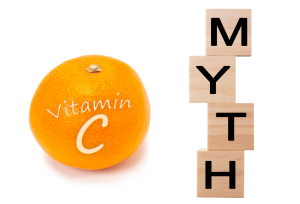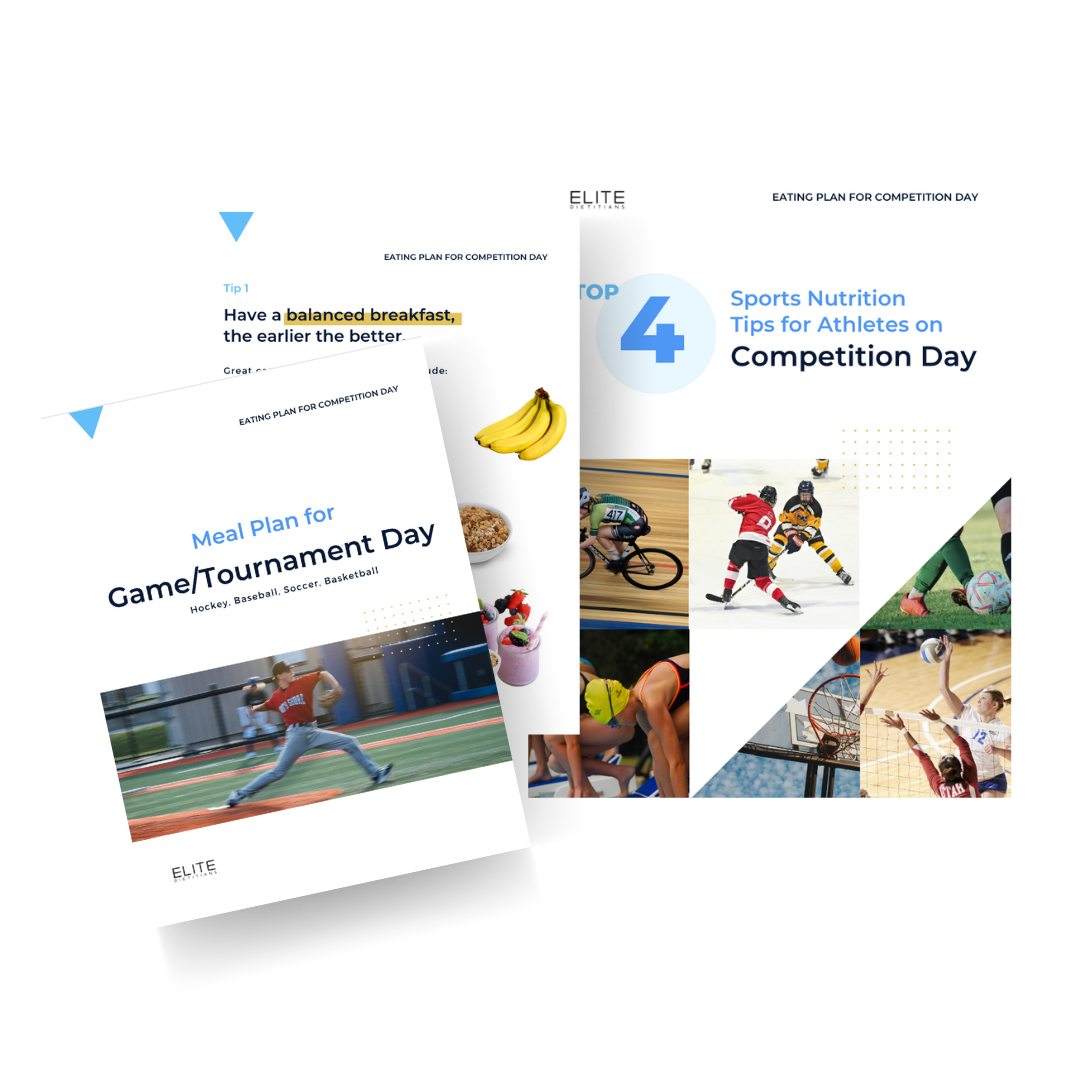It is not easy to get enough iron from foods, so here we learn how to get more iron in your diet. Iron deficiency is the most common nutrient deficiency among athletes and the most critical mineral for athletic performance. This blog will cover the two types of iron, the iron content of foods and the foods that boost absorption of iron in your diet. Spoiler alert: its not vitamin C!
Pro tip: To learn why iron deficiency is common in young athletes, see this blog: Young Athletes Have Iron and Not Just the Girls.
How Much Iron do Foods Have?
There are two types of iron in the diet: Heme IRON is found in animal sources of food and NON-Heme iron is found in vegan foods. The human body absorbs heme iron better than it does non-heme iron, so we tend to get the most iron from animal sources. For example, we absorb about 20% of heme iron from animal foods, compared to just 2-10% of non heme iron is absorbed. For this reason, you cannot compare iron content between heme and non heme foods without taking this into account. Below is are tables of the iron content of food sources of both heme and non heme iron, before absorption is taken into account.
TABLE 1. IRON CONTENT OF HEME IRON ANIMAL FOODS
| Animal Food | Amount Heme Iron (mg) |
| Liver (75g) | 4.6 – 13 |
| Oysters or mussels (75g) | 5 – 6.3 |
| Lamb or beef (75g) | 1.5 – 2.4 |
| Clams (75g) | 2.1 |
| Sardines, canned (75g) | 2.0 |
| Tuna, mackerel (75g) | 1.2 |
| Chicken or pork (75g) | 0.9 |
| Salmon or turkey (75g) | 0.5 |
| 1 egg | 0.7 |
Table 2. IRON CONTENT OF NON HEME IRON PLANT FOODS
| PLANT FOOD | Amount Non Heme Iron (mg) |
| Soybeans, cooked (3/4cup) | 6.5 |
| Beans or Lentils (3/4cup) | 3.3 – 4.9 |
| Pumpkin Seeds, roasted (¼ cup) | 4.7 |
| Cold cereal e.g. Shreddies or Raisin Bran (30g) | 4.5 |
| Veggie meatballs (150g) | 3.2 |
| Tofu, firm, chickpeas or edamame cooked (¾ cup) | 2.4 |
| Cooked swiss chard, beet greens, spinach ½ cup | 1.8 |
| Baked potato skin | 1.9 |
| Seaweed dried (½ cup) | 1.7 |
| Quinoa cooked (½ cup) | 1.5 |
| Oatmeal cooked (¾ cup) | 1.4 |
| Almonds, walnuts or pecans (¼ cup) | 0.8 – 1.3 |
| Green peas, cooked (½ cup) | 1.3 |
| 1 slice bread | 0.9 |
| Tomato sauce, canned (½ cup) | 1.2 |
| Raisins or apricots (¼ cup) | 1.9 |
| Pasta (½ cup) | 0.8 |
| Beets cooked (1 cup) | 1.1 |
What Does an Iron Rich Diet Look Like?
See the sample meal ideas below for a look at an iron rich diet.
Breakfast:
1 cup oatmeal + 2 Tbsp raisins = 2.3
2 eggs + 2 toast = 3.2mg
1 cup raisin bran cereal + milk = 7 mg
Lunch:
1 cup quinoa salad with chickpeas and beets = 2.7 mg
Chicken salad wrap = 2.7 mg
Lentil soup + bun = 4 mg
Dinner:
1 cup pasta + 1 cup bolognaise = 4 mg
Baked potato + salmon + asparagus = 3.5 mg
Snacks:
1/2 cup dried seaweed = 1.7 mg
1/4 cup raisins = 1.9 mg
1/4 cup almonds = 1.4 mg
1/4 cup roasted pumpkin seeds = 4.7 mg
How To Get More Iron From Your Diet
An important aspect of getting iron from food is understanding its very limited absorption and the factors that impact this. There are a number of different compounds in foods that can impact iron absorption in our bodies. A lot of research has shown that while some of these ingredients such as vitamin C and calcium may impact iron absorption in one meal, they don’t seem to have a practical effect on our iron levels. For this reason, this section should be taken with a grain of salt.
What Affects Iron Absorption?
We know that the bioavailability of iron in the diet has more impact on our iron status than the absolute amount of ingested iron. This means that our intake of heme to non heme iron is a strong predictor of our iron status.
Iron absorption is diminished in vegetarian diets because of certain compounds that bind non-heme iron and interfere with its absorption.
What Blocks Iron Absorption?
- Phytates found in whole grains, soy, seeds, legumes, some nuts
- Oxalates are in green leafy vegetables, soy, almonds, potatoes, tea, rhubarb, cereal grains, and beets
- Phosphates in dairy, meat, seafood, and legumes
- Tannins from tea, coffee, legumes
- Polyphenols found in fruits, vegetables, and cereals
- Antacids and calcium supplements
Studies on phytates and oxalates tell us that foods like soy and spinach reduce iron absorption in a meal, but they don’t seem to have a negative impact on our overall iron status.
Is Spinach a Good Source of Iron?
Does tea and coffee impair iron absorption?
A 2018 review of four clinical trials that found that coffee and black tea consumption inhibit iron absorption in meals both in individuals, regardless of their iron status.
Drinking black tea and coffee inhibits iron absorption.
Does milk impair the absorption of iron?
We know that calcium supplements inhibit iron absorption and can lower iron levels in the body. However, the effect of dairy intake on iron absorption may not be as pronounced when dairy is served as part of a whole diet.
Including dairy products with meals does not impact iron status much, if at all.
What helps iron absorption?
There is strong evidence that adding meat to a vegetarian meal improves absorption of iron in all studies. Research is not sure what part of animal proteins help with iron absorption. Consuming a balanced diet that includes a mix of heme and non heme foods improves iron absorption in the gut, when served with a balanced diet.
Adding animal protein to meals boosts iron absorption.
Does vitamin C help iron absorption?
Vitamin C helps iron absorption in a single meal, but it does not impact iron absorption in a whole diet.
Contrary to popular belief, adding vitamin C to meals or iron supplements does not affect hemoglobin or ferritin levels.
Do prebiotics help iron absorption?
A healthy gut microbiome, prebiotic fibres and probiotic bacteria may have a positive impact on iron absorption, but studies are unclear on the connection.
Iron Supplements
If you have iron deficiency, learn all about iron supplements in this blog: Which Iron Supplements are Best for Young Athletes?













2 Comments